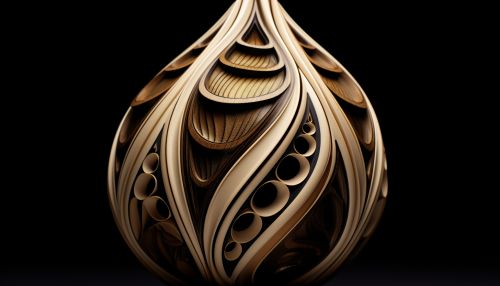Digital Sculpture
Introduction
Digital sculpture is a form of artistic expression that utilizes digital technology to create three-dimensional objects. This art form is a part of the broader field of digital art, which encompasses a variety of artistic practices that use digital technology as an essential part of the creative process. Digital sculpture is a relatively new field, emerging in the late 20th century alongside the development of advanced computer graphics and 3D modeling software.
History
The history of digital sculpture is closely tied to the development of computer technology. The first instances of digital sculpture can be traced back to the 1960s, when artists began experimenting with computer-aided design (CAD) software to create virtual 3D objects. Early pioneers in this field include artists such as Manfred Mohr and Harold Cohen, who used computers to generate abstract geometric forms.


As technology advanced, so did the capabilities of digital sculpture. The 1980s and 1990s saw the introduction of more sophisticated 3D modeling and rendering software, such as AutoCAD, 3D Studio Max, and Maya. These tools allowed artists to create more complex and realistic digital sculptures, expanding the possibilities of the medium.
Techniques and Tools
Digital sculpture involves a variety of techniques and tools, many of which are shared with other forms of digital art. One of the primary tools used in digital sculpture is 3D modeling software. These programs allow artists to create, manipulate, and render three-dimensional objects in a virtual environment.
There are several different techniques that artists can use when creating a digital sculpture. One common method is polygonal modeling, where the artist creates the sculpture by manipulating a mesh of polygons. Another technique is digital sculpting, which is more akin to traditional sculpting. In this method, the artist uses tools to "carve" the sculpture out of a digital block of material.
In addition to 3D modeling software, digital sculptors often use other tools to aid in their process. This can include graphic tablets for more precise control, and 3D printers to bring their digital creations into the physical world.
Impact and Influence
Digital sculpture has had a significant impact on both the art world and the broader cultural landscape. In the art world, digital sculpture has challenged traditional notions of what sculpture can be. It has expanded the possibilities of the medium, allowing artists to create works that would be impossible to achieve with traditional materials and methods.
Beyond the art world, digital sculpture has also had a significant influence on a variety of industries. For example, in the film and video game industries, digital sculpture is used to create 3D models for characters and environments. In the field of industrial design, digital sculpture is used to create product prototypes. And in the medical field, digital sculpture is used to create detailed 3D models of human anatomy for study and surgical planning.
Future of Digital Sculpture
The future of digital sculpture is likely to be shaped by advancements in technology. As 3D modeling software becomes more sophisticated, artists will be able to create increasingly complex and realistic digital sculptures. Additionally, advancements in 3D printing technology will make it easier for artists to bring their digital creations into the physical world.
Another potential development in the field of digital sculpture is the integration of virtual reality (VR) and augmented reality (AR) technologies. These technologies could allow artists to create digital sculptures in a fully immersive virtual environment, or to overlay digital sculptures onto the physical world.
